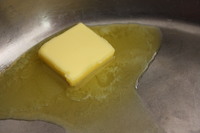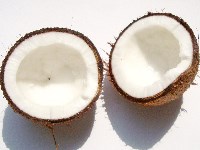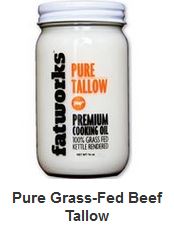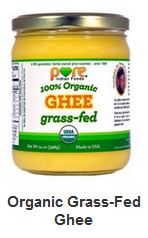- Home
- Tallow
Blog Categories
Recent Posts
7 Reasons to Cook With Lard, Tallow, and Ghee
Posted by on

If you’ve been following our blog, chances are that you read Edna’s piece on healthy fats a while back. We’re huge fans of animal fats – and not just for their health benefits. I’ll come out in the open with it and admit that I can’t and don’t eat pork leaf lard (some allergies don't go away, even with a healthy lifestyle), but beef tallow, schmaltz, and ghee are welcome on my table anytime.
Curious why?
Let’s talk fat. Good, yummy, flavorful fat. I’ll spill the motivation for my praise of fat in this post, and I hope you find it equally enchanting by the time you finish reading…
Flavor
Butter was my best friend for years. We had a great relationship – in fact, we were so close I once made whipped butter with honey as a dessert…more on that in the future sometime. But the fact is that butter wasn’t good to me. In fact, you could say our relationship was a little abusive.
I treated my butter well. Cooked carefully with it, and shared only the finest ingredients. In return, butter gave me an upset tummy. Not a good trade.
So I needed a new, flavorful friend that could deliver the same benefits as butter, without the after-effects. But what could replace butter? I had a brief love affair with olive oil, flirted with coconut oil, and finally found ghee. And tallow. And a few friends who joined me in the journey found leaf lard.
Any self-respecting French chef can espouse the virtues of leaf lard, and Pete Wells does a phenomenal job over on Food & Wine of describing how delightful this fat can be. His descriptions leave me craving a little lard in my life. Unfortunately, that’s not something that’s in the cards.
Tallow, on the other hand, is a fat I’ve met in person, and fallen instantly in love with. It doesn’t leave your food tasting like beef (although it does work best in savory dishes), delivers many of the same cooking benefits of pork leaf lard, and unlike leaf lard, you can store it at room temperature.
Ghee’s flavor is like my beloved butter, but nuttier. And ghee can be kept at room temperature without going rancid. And has a higher smoke point. And is nice to lactose-intolerant folks. And…
But the thing I love best about tallow and ghee…the thing that Pete Wells raves about with lard?
Flavor.
You can’t call yourself a foodie unless you’ve got a little ghee, lard, or tallow in your pantry.
Sustainability
Sustainability is one of those buzzwords everyone wants a piece of. Let’s face it, there’s cash in the “green” economy, but not everything that claims to be sustainable actually is. Although the meteoric rise of many pseudo-Earth-friendly products has made a lot of us skeptical about what’s actually good for the planet, animal fats are something you can feel good about it.
The amount of meat consumed on a daily basis in the United States is shocking. Think about how many pigs, cows, ducks, chickens, and turkeys it takes to make all of the fast food, restaurant dishes, and home-cooked meals for an entire country.
Here’s a hint. An average hamburger is 1/2lb. of beef. The average cow weighs about 1200lbs, of which 530lbs is usable meat (thanks to Chicama Run Farm for that stat!). So the average cow has the maximum potential to produce 1060 hamburgers. According to the Huffington Post, Americans eat 50 BILLION hamburgers each year.
See where I’m headed?
Every year, over 23,000,000,000 lbs. of beef carcass are wasted – including bones and fat. You already know we love bone broth, which makes use of the bones, but to keep the fat from going to waste, there’s one important step you can take as a consumer. Use tallow.
It’s the whole beast mentality. Instead of wasting parts of an animal, use the “waste”. It’s one way to reduce your impact on the environment, especially considering that livestock can be water and feed intensive.
We just took a quick look at beef, but if you use the fat from other livestock, you’re cutting waste there, too.
(It’s important to note that some factory farms will feed excess fat to their livestock. That’s forcing another creature into cannibalism, and not cool in my book…would you really want to eat a cow that ate beef? This is just one of the many reasons I support grass-fed, pastured livestock, but we’ll talk about that some other day…)
Health
If you’re on our blog, chances are that you know the idea of fat is a complex one. You’re probably also well aware of the importance of balancing the types of fats you eat, especially omega 3s and 6s. Animal fats and ghee provide a nearly perfect ratio of omega 3s and 6s.
Ghee, lard, and tallow are three of the top fats for individuals following the Paleo and Primal diets, but also number among the top fats our recent ancestors cooked with. In fact, as Lauren on Empowered Sustenance 1 reminds us, lard is heat-stable, heart-healthy, and a good source of healthy cholesterol. Beef tallow is, as the Real Food Forager reminds us, an excellent source of Vitamin D and protective against certain forms of breast cancer 2. Ghee’s not that shabby in the health world, either. Real Food Liz expounds on its virtues, particularly the high content of Vitamin K2 and Vitamin A found in grass-fed ghee.
So yeah…it’s healthy.
And as the folks over on HuffPost Taste wrote a while ago, “lard has 20 percent less saturated fat than butter; it's higher in monounsaturated fats which are said to lower LDL cholesterol; and it has none of the trans fat that shortening does.”
Texture
Looking for flaky pastries, crisp-fried fish and vegetables, and delightfully decadent cornbread? That’s the domain of lard and tallow. Hunting for a silky, buttery texture? Look to ghee. Hunting for what made the old McDonald’s French fries so guiltily crispy on the outside and just perfectly mushy inside? The answer isn’t as guilt-inducing as you think. They cooked their fries in tallow until pressured to switch fats.
There’s a fat for every job. Often, the best flavor and texture is found with the help of animal fats like lard, ghee, and tallow.
Dollars and Sense
If you’re the kind of person who likes to save a little cash, you should be cooking with animal fats. Butchers usually throw out their beef fat and pork fat – it’s useless to them, but useful for you. If you buy your meat from a real butcher (not one who buys their meat frozen for three years in advance) you’ll be able to get the fat you need to render your own tallow and lard for free or next to nothing.
Making lard and tallow or clarifying your own ghee isn’t a task everyone enjoys. My acne-prone skin isn’t a fan of working over a pot of boiling meat or ghee-in-progress. Luckily, I found out that a pound of tallow costs MUCH less than the equivalent in coconut oil or olive oil.
Looking to save cash? This is a good place to start.
How much do you spend on cooking oils? As soon as “healthy” is tacked to a fat, the price seems to go through the roof. Am I right? Look at coconut oil. A few years ago, it was dirt cheap. Now? Ouch.
Save yourself some cash by turning to the healthy fats that get overlooked. Even when you buy them instead of making them from scratch, healthy fats are a pocket-friendly option. You’ll be surprised how much money you can save by switching from unhealthy plant-based fats to healthier, tastier, animal-based options.
Tradition
Anyone from the South? You know what I’m talking about when I say lard is a kitchen necessity. Same goes for tallow.
Ghee is a new fat in the US, but it’s got a long history of traditional uses in India. It’s a fat with centuries of use, a multitude of recipes based off of it, and a list of folk cures ascribed to it that’s a mile long.
If you’ve got a few of your great-grandmother’s recipes sitting around, you can bet they ask for tallow or lard. Are you really going to substitute with shortening, margarine, or another unhealthy, flavorless modern fat?
I didn’t think so.
Whether great-grandma was from India and used ghee, or from Charleston and swore by lard, you’ll be looking for a healthy fat to make her cherished recipes.
Sometimes, tradition is enough of a motive.
Versatility
If you aren’t convinced of the virtues of healthy fats yet, I’m not sure what else I can do to help you see the light. There’s just one more thing I want you to consider….versatility.
What do I mean?
It’s simple. You can’t really make use of most oils and cooking fats outside the kitchen. That’s not the story with tallow, lard, and ghee, however. From skincare to candle-making, these fats are known for being useful around the home, as well as in the kitchen.
Ghee is a popular skin moisturizer, tallow candles are an easy craft to make at home and a traditional part of candle-making, and lard soaps are among the best cleaning agents known to man.
How can canola oil compete with that?
Please note that I don’t advocate using animal fats that aren’t derived from grass-fed and pastured animals. On the one hand, I believe in giving livestock the chance to graze as nature intended, and on the other, there are numerous health benefits associated with grass-fed animal products.
Image Credits: Melodi2 on morgueFile
References:
1. http://empoweredsustenance.com/lard-is-healthy/
2. http://realfoodforager.com/four-reasons-to-use-beef-tallow/
Information provided in this communication is not designed to and does not provide medical advice, professional diagnosis, opinion, treatment or services to you or to any other individual. This is general information for educational purposes only. The information provided is not a substitute for medical or professional care, and you should not use the information in place of a visit, call consultation or the advice of your physician or other healthcare provider. Wise Choice Marketing Inc is not liable or responsible for any advice, course of treatment, diagnosis or any other information, services or product you obtain through Wise Choice Marketing Inc.

The 5 Best Healthy Fats for Any Diet
For years, fats have had a bad reputation, but people are realizing that healthy fats are one of the essential components of the human diet. Fats and oils are very similar, but most fats are solid at room temperature and most oils are liquid at room temperature. Ghee Ghee is a type of clarified butter that’s used for cooking in many parts [...]


 Loading... Please wait...
Loading... Please wait...

















